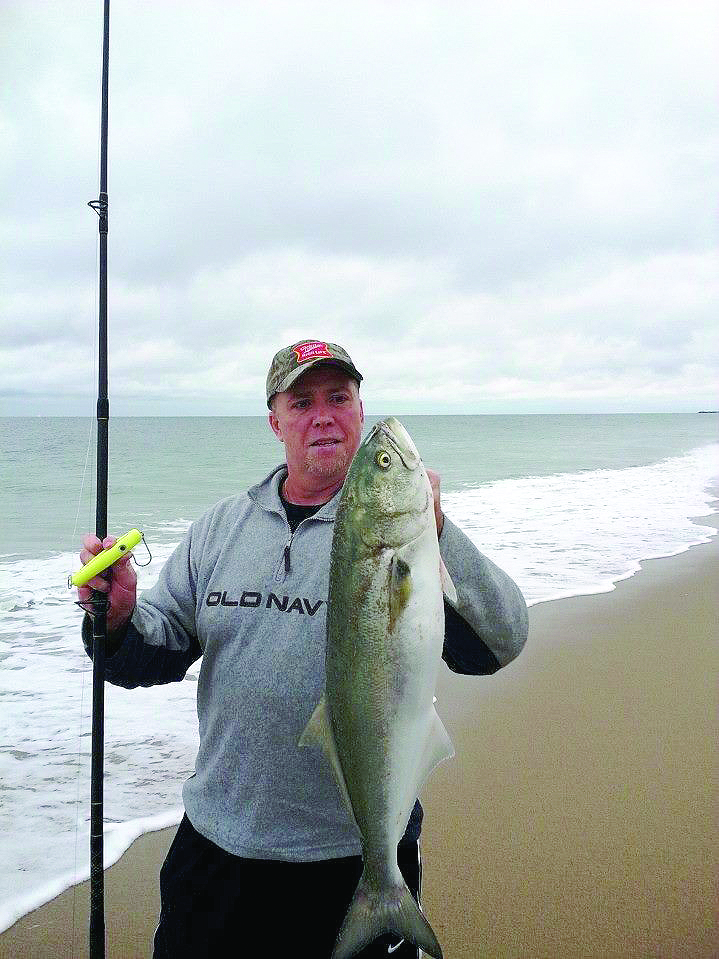By Jill Christoferson:
When you ask people about their favorite fish species in Florida, you will undoubtedly get a wide array of answers—from the ever popular redfish and spotted seatrout found in inshore waters, to the snappers and groupers found on Florida’s many offshore reefs, to the billfish and dolphin found in Florida’s bluewater.
These are some of the classic species that make fishing in Florida so popular. Personally though, I’ve always been a fan of the oddballs and the underdogs. In this case, I’m talking about bluefish.
My first memory of bluefish goes back to my childhood, fishing in New England with my dad in our 17-foot Boston Whaler. We were fishing for the usual fare, summer flounder and porgy, but there was one big rod set off the back of the boat, rigged with heavy tackle and baited with a fish I deemed too small to keep, but too large to be bait for any normal-sized fish. I remember asking my dad what kind of fish would eat something that big. The tone of his voice gave me the impression that bluefish were something very special.
If you are not familiar with bluefish, I admit they can look like just another generic silver fish. Coupled with the frequent distinction of being too oily or fishy for most typical fish dishes, it’s not hard to see why these guys may not win the popularity contest. But, there are more to bluefish than meets the eye.

Bluefish, Pomatomus saltatrix, are a one-of-a-kind fish. They are the only living fish species in their family, which means nothing else in the ocean looks, tastes or fights like a bluefish. Take notice of their razor-sharp pointed teeth, used for chomping and tearing large bites out of their desired prey. Examine further their ferocious behavior, in a feeding aggregation known as a “bluefish blitz,” churning the water so violently it resembles a washing machine. Add to that the stamina to migrate from New England to Florida and back again each year, and that bluefish starts sounding like a formidable opponent, especially at sizes in excess of 36 inches.
Beginning to sound more like a fish you’d want on the end of your line? Well, once the water cools in winter, find a decent inlet, shoal or rip with some lively bait schooling action and drop a line. They’ll take a nice-sized plug just as readily as they will live or cut bait. You’ll want to make sure your tackle is heavy enough to combat one of these power machines and your leader is strong enough to stand up to those sharp bluefish chompers.
If you’re willing to give them a whirl, there are some great recipes spanning a number of different cuisines from around the globe. You’ll also want to eat them soon after catching since, as top predators, they have strong digestive enzymes that cause their meat to have a short shelf life. Still not convinced they’ll be the best table fare? Catch-and-release is a great option too.
For more about bluefish, visit MyFWC.com/WildlifeHabitats and click on “Species Profiles,” “Saltwater” and “Bluefish.”